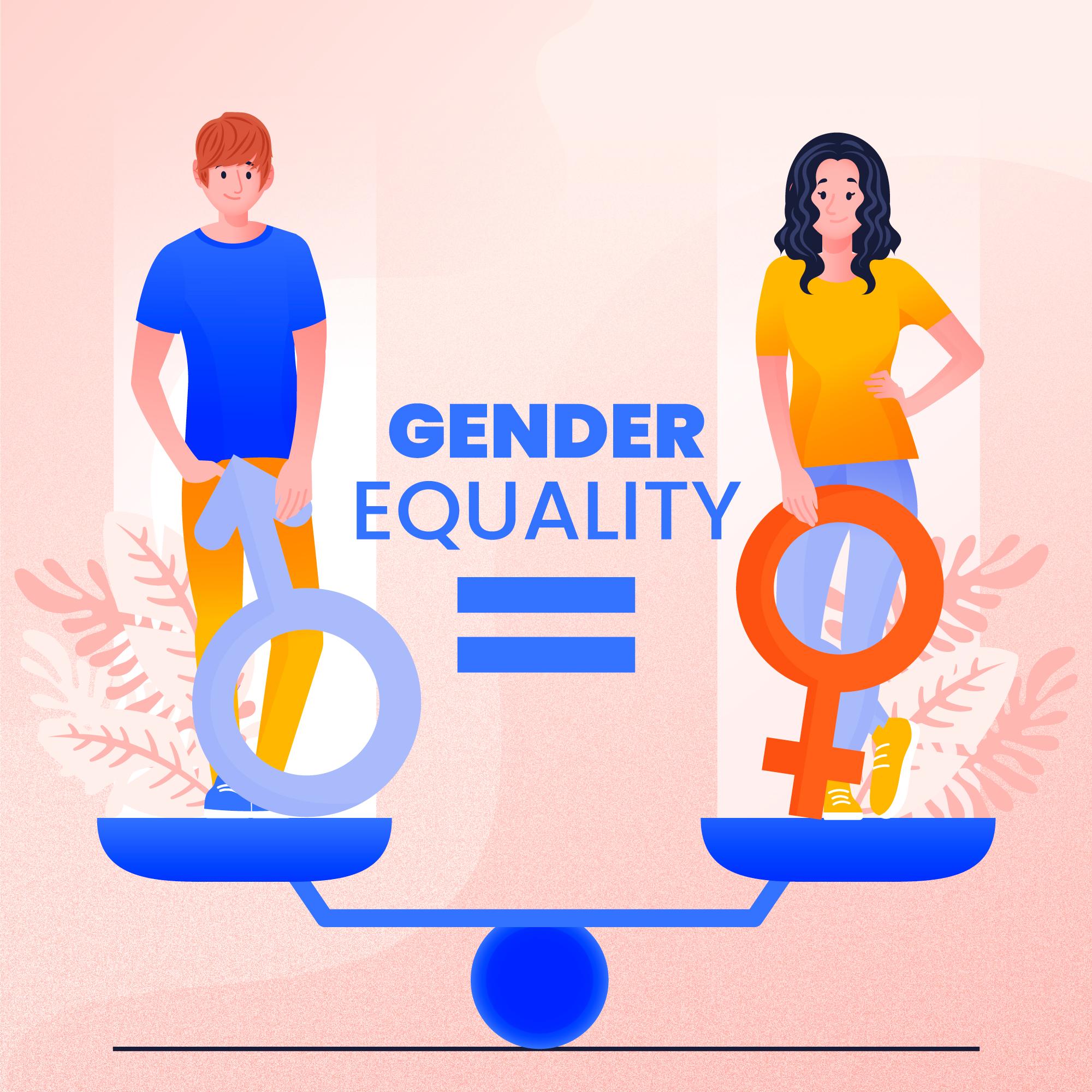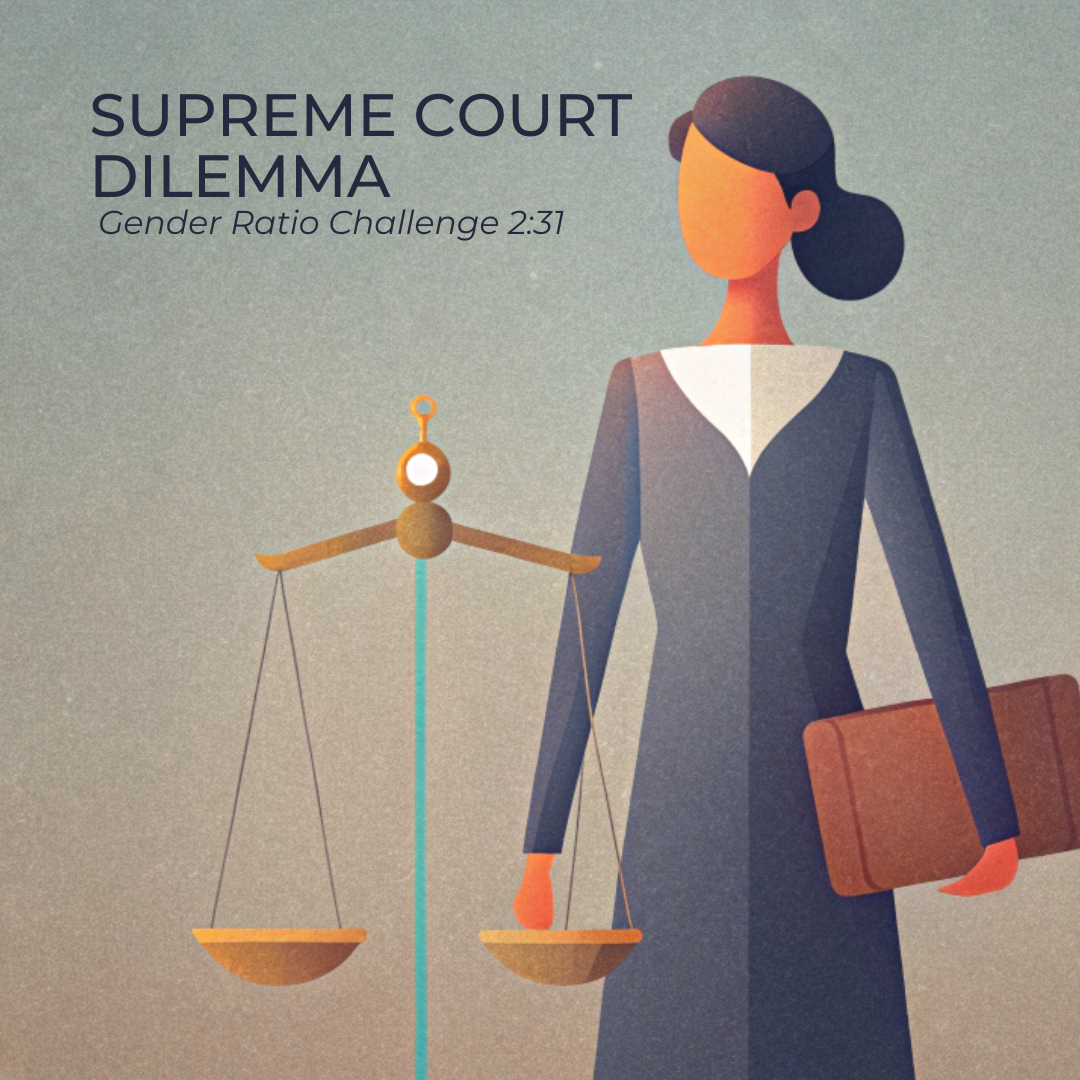CATEGORIES
#Breaking Stereotypes #Education and Life SkillsOverview:
- Historical context on the gender diversity steps taken by the judiciary
- Current gaps in the judicial system and the consequences on the future generation
- What problems contribute to the gaps?
- How can society help and contribute to overcome this challenge?
Established on January 28, 1950, the Supreme Court of India is a guardian of justice and a pillar of democracy. It upholds citizens’ fundamental rights, ensuring that the voice of the people is heard and respected in democracy. Article 137 grants the Court the power to review and rethink its rulings, adapting to societal changes. This authority, shaped by parliamentary laws and Article 145, highlights the Court’s role in creating a just legal landscape in India. Understanding its role is key to grasping the heartbeat of Indian democracy.
Being the highest order of decision-making bodies in the country, the court would require a diverse judge group. An equitable and democratic country would expect the same due to the various types of situations arising in the same. Since judges can overturn laws, it’s super important to have gender diversity in the judiciary. However, ever since the establishment, the court has employed 283 judges, out of whom only 11 have been women. This startling number poses as a testament to the deep problem hidden in the Indian judiciary system.
History and the Development of Women’s Representation
Since 1846, all qualified individuals, regardless of nationality or religion, have been allowed to enter the legal profession. The inclusion of women into the judiciary only began in 1923. The Legal Practitioner’s (Women) Act of 1923 granted the women the rights to practice law. Before 1923, the Act only referred to personnel practicing law as “men” rather than “individuals.”.
After graduating from law school, Regina Guha became the first female to challenge the Legal Practitioners Act before the inclusion. She argued that the General Clauses Act should apply to women, given its text referring to men. The court did point out that no woman had ever previously worked in Indian courts. She later applied to Calcutta University as a candidate for the law test but was rejected for not attending lectures. After earning her degree in 1921, Guha petitioned to practice in Patna. However, the court ruled that women couldn’t be certified under the Legal Practitioners Act.
Even after the inclusion, only 2 out of the 33 judges in the Supreme Court are women. What is acting as a blockade for women to become judges in the Supreme Court? There have been multiple instances in the past where this problem has been highlighted.
The UN Secretary General Ban Ki Moon has particularly stressed this matter in 2012.
The first woman supreme court judge, Fatheema Beevi, was confident that her posting started paving the way. However, the country is yet to see a woman CJI. B.V. Nagarathna is set to take the chair in 2027 for 36 days. She is poised to become India’s first woman CJI, although she won’t complete the typical tenure of a CJI.

Challenges to Women’s Judicial Equality
Even after 74 years of establishment, the lack of gender diversity causes many questions to arise in every citizen’s mind. This means that women solicitors are not given the opportunity to represent their skills, which could lead to promotions. Hence, it becomes essential to point out root problems.
Is there a lack of opportunities?
As stated in the ILI Law Review, “Legal education has been off limits for women for many decades, yet few of them who made the difference by seeking legal education did not have a bed of roses to walk on.”
Taking the example of the year 2000, three judges were appointed to the Supreme
Court. Y.K. Sabharwal, Ruma Pal, and Doraiswamy Raju JJ. In 2005, Y.K. Sabharwal and Ruma Pal were considered equal in seniority when R.C. Lahoti retired. However, since Ruma Pal was sworn in after Sabharwal on the same day, she lost her seniority. When two judges are sworn in the same day, seniority is determined by their years of service. In this case, Y.K. Sabharwal had more years of experience than Ruma Pal. This underscores a broader issue: the evaluation criteria for women in the judiciary, not just their representation, needs attention.
This pertains to the question; it is not just about opportunities. It is about the equity in which the opportunity is provided. The timeline, availability, and criteria when compared to a male competitor also highlight the opportunity.
Is education the issue?
Most female lawyers leave the profession in the middle of their careers. A 2022 Reuters survey found 60% of female solicitors leave their jobs between ages 35-55, typically their career peak.
India’s literacy rate only stands at 74.04%. According to the National Sample Survey Office, 15.1 million girls in India are out of school as of 2021. When the basic education in the country is not considered prominent in a girl’s life, law is far-fetched. Education does stand as one of the major issues for the lack of female lawyers.
Does social stigma have a role?
Certainly, a woman’s role in society is mainly viewed as domestic bias present in the workplace. Due to the lack of opportunities, as mentioned above, women mentors are also scarce. As stated in the article by Legal Quorum, networking is one of the most important aspects of being a lawyer. Networking becomes a streamlined process when one has a mentor or a peer group that helps socialize. “This issue is particularly tough for females navigating the industry since they probably do not have enough mentorship opportunities or connections that might help their careers develop,” states the article.
The Way Forward
How can the judicial system be diversified to provide all genders equal opportunities and maintain the same social construct?
Firstly, this starts by advocating for lower gender discrimination in the judicial field. PILs being filed by the public for a higher number of female lawyers/judges can raise awareness. When a matter comes up to the Supreme Court, the whole country watches. This will hold discriminators accountable and spread the word about the need for female lawyers.
The need rises when specific cases are brought up. Vishaka v. State of Rajasthan is one such case that addresses the issue of sexual harassment in the workplace. Cases like this require judge benches filled with diversity to have an unbiased and fair judgment.

Secondly, breaking the patriarchal taboos. Associating women with ‘domestic’ roles causes taboos to form. This can, indirectly, push a client to prefer a male lawyer when comparing societal capabilities between the genders.
Breaking these taboos can be a long-term process, but taking the first step becomes very essential. This will help families trust lawyers for their skills, encouraging children to pursue law despite societal taboos.
Thirdly, start women networking communities. As mentioned above, networking becomes very essential in a lawyer’s career. Due to the scarcity of women lawyers, partnering and networking may seem impossible for some lawyers. This can be aided by women-run networking communities that encourage female lawyers to stand out. This can be corporate, judicial, or litigation-related, as lawyers are needed in every field.
This can also be done by advocating for and providing tips for young lawyers. Taking the example from a Girl Power Talk article, the more tips provided, the greater push.
Conclusion:
In conclusion, the Supreme Court faces significant underrepresentation of women, stemming from historical bias and broader societal issues. Notwithstanding advancements, the judiciary continues to lack a varied viewpoint that is essential to reasonable and equitable justice. Addressing this imbalance requires recognizing the obstacles women face and actively promoting opportunities for their advancement in the legal field. By promoting an inclusive atmosphere and gender diversity, we can ensure the Supreme Court better reflects the society it serves. This would ultimately increase the legitimacy and efficiency of our legal system.


